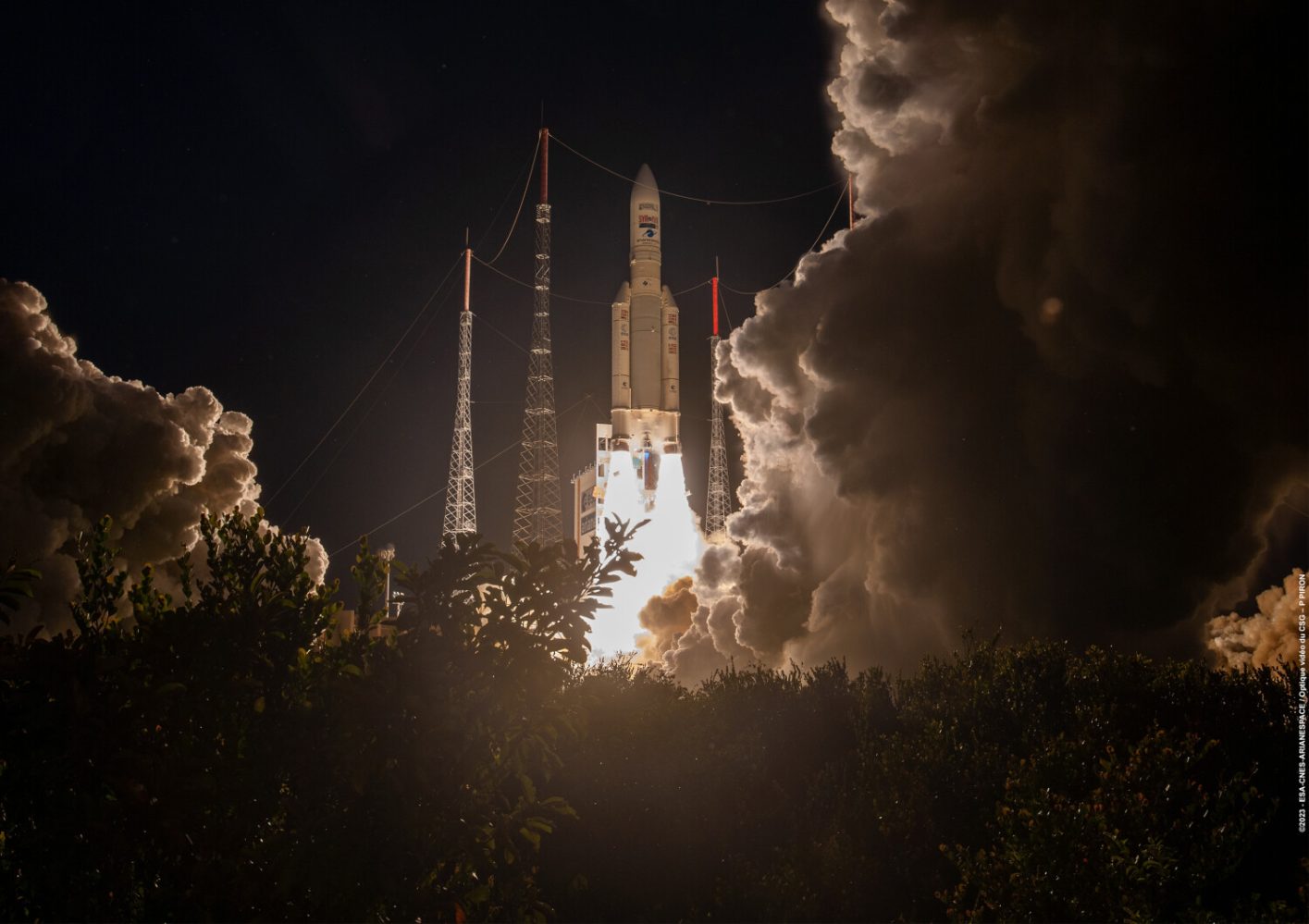
Yesterday marked the end of an era for European space launches with the final flight of the Ariane 5 rocket. With the mission completed, Europe now finds itself in a precarious position without an available launcher in the short term.
The end of an era
For Europeans, the Ariane 5 provided guaranteed access to heavy lift capabilities for the continent, enabling space agencies and companies to launch their largest satellites into orbit and conduct research missions in the outer reaches of our solar system—all without technically leaving Europe, except for the journey across the Atlantic.
At 6 P.M. ET, the final Ariane 5 lifted off from its launch site in French Guiana. After two delays—first to replace some pyrotechnic lines and then due to poor weather—the mighty Ariane 5 was finally able to bid us farewell.
On top of the rocket were two communication satellites, configured uniquely for the Ariane 5’s dual payload capability. The first to be deployed was the Heinrich-Hertz-Satellit from Germany, managed by the German space agency. It is the nation’s first dedicated telecommunications satellite and will be used by several German government agencies.
The second payload, and the final one to ever reach orbit on an Ariane 5, was SYRACUSE 4B, a defense communication satellite for France. Given that the Ariane 5 is a French rocket, it is fitting for its final payload to also be French.
In total, the Ariane 5 completed 117 launches between 1996 and 2023. Of those missions, 112 were successful, with three partial failures and two complete failures, resulting in a 97% success rate for the Ariane 5 (counting partial failures as half successes). The rocket has been entrusted with launching some of Europe’s most significant scientific missions. Here is a list of notable spacecraft that hitched a ride on the Ariane 5:
- XMM-Newton (1998)
- Rosetta (2004)
- Automated Transfer Vehicle ISS resupplies (2008 – 2015)
- Herschel Space Observatory (2009)
- Galileo (First in 2016)
- BepiColombo (2018)
- James Webb Space Telescope (2021)
- JUICE (2023)
The future of European space launch access
With the retirement of the Ariane 5, those wishing to fly with Arianespace will now only have the Ariane 6 as an option. The Ariane 6 is currently under development, with a planned debut in 2024. However, the timeline for its launch is not as certain as desired.
At present, Europe does not have the capability to reach space independently. The continent lost access to the Soyuz launcher following Russia’s invasion of Ukraine. Additionally, its primary light lift launcher, Vega-C, is currently out of service as the company works to resolve an issue with one of its stages.
In the meantime, Avio is preparing to bring the regular Vega back online, although it is expected to be retired in favor of the Vega-C. Consequently, many commercial and government missions are currently heading to the US to secure a ride on SpaceX’s Falcon 9 or explore other commercial options.
Europe is gradually developing a commercial launch sector. PLD Space is making preparations for its first Miura 1 rocket while continuing to develop the orbital Miura 5 rocket. Currently, they appear to be the closest to bringing a rocket to the market.
A new era has begun, bidding farewell to most Western rockets that were initially developed with government customers in mind. Now we witness the emergence of modern rockets designed to compete commercially with the likes of SpaceX. These are exciting times, even if we have to bid farewell to some of our favorite rockets.
FTC: We use income earning auto affiliate links. More.



Comments